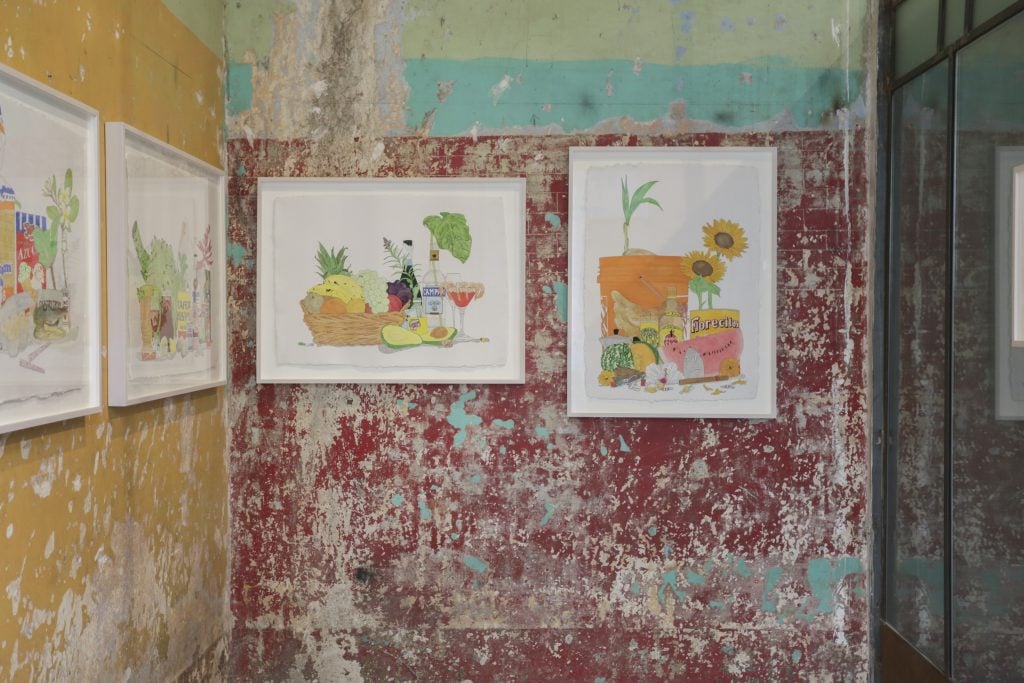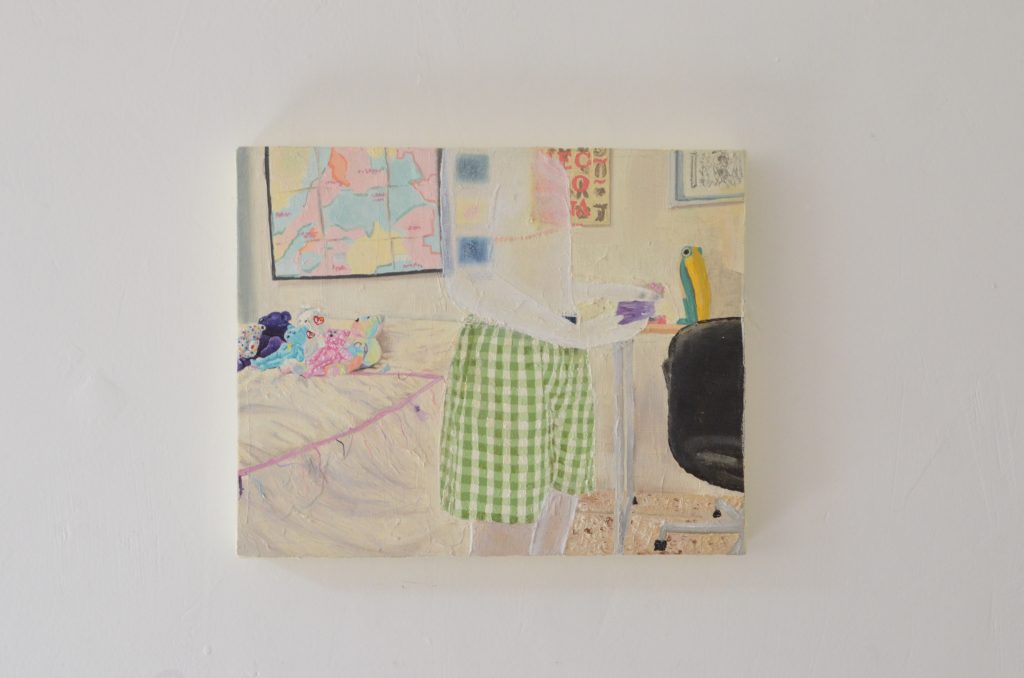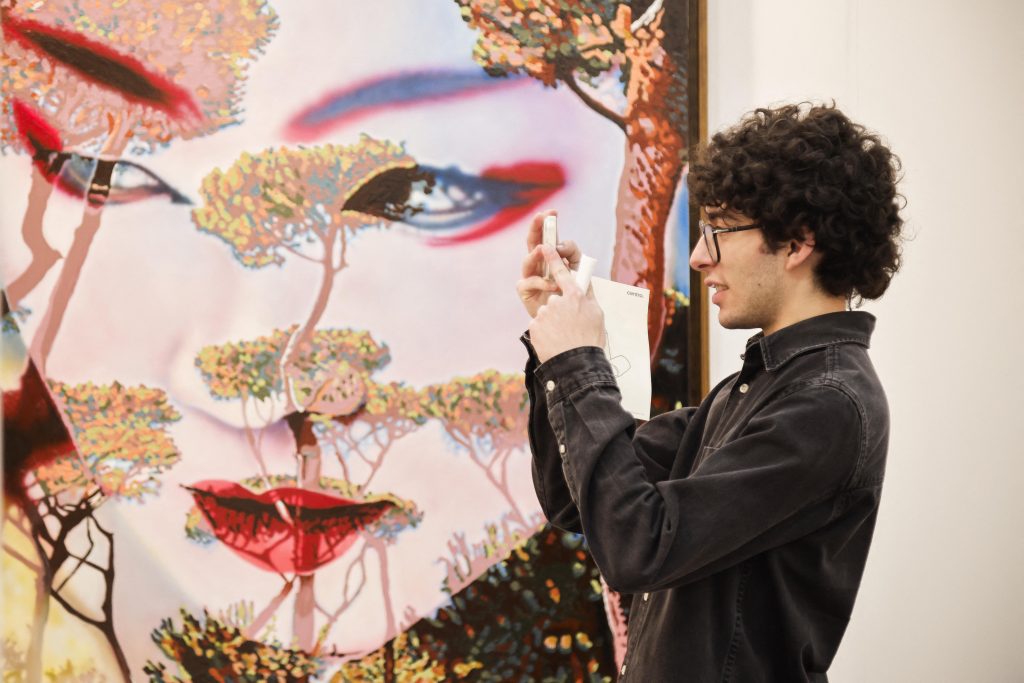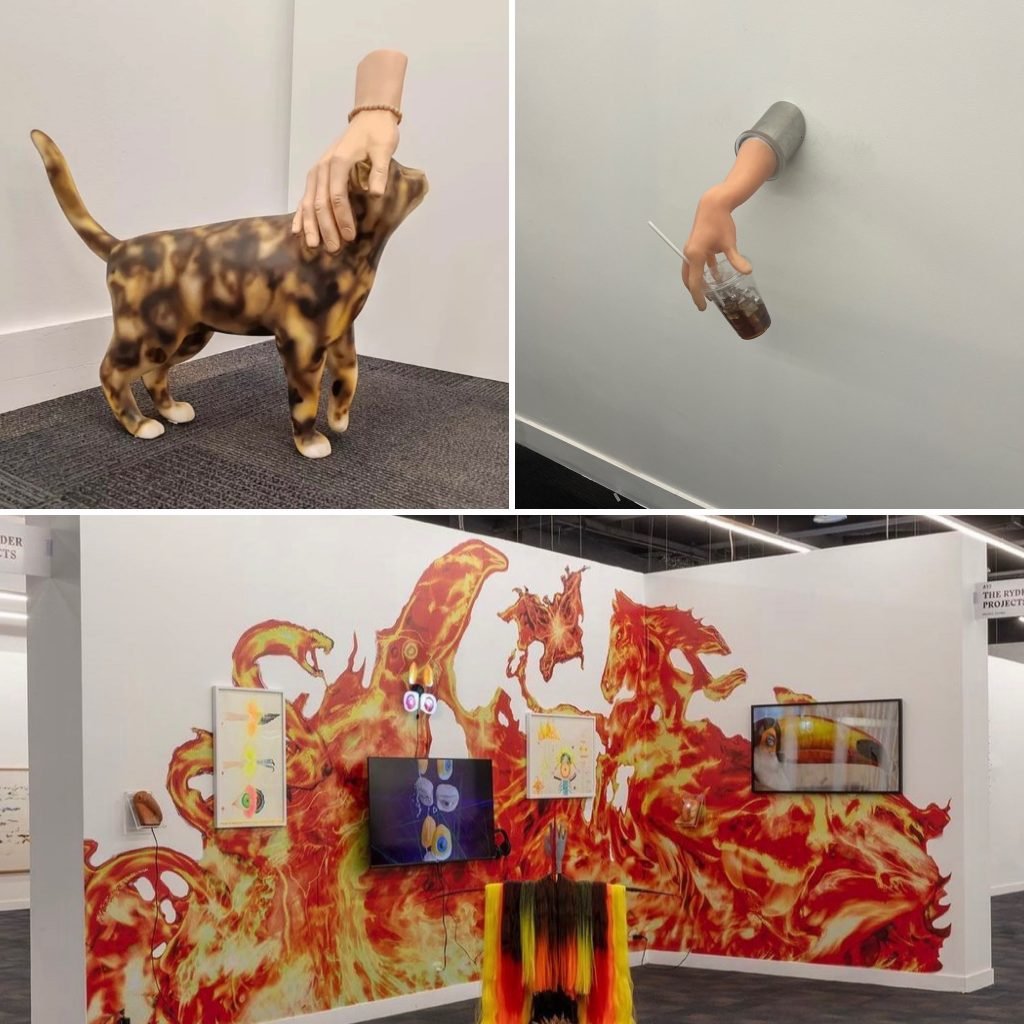Art World
A Focus on Corporeality and Queerness at Mexico City Art Week
Here’s what was on offer during the 2024 edition of CDMX Art Week.

Here’s what was on offer during the 2024 edition of CDMX Art Week.

Shanti Escalante-De Mattei

Whether it was at the private party for the opening of Gabriel Orozco’s solo show at Kurimanzutto or the long line waiting for Ubers outside of ZonaMaco, I heard the same line over and over again, “I haven’t been to CDMX art week in years.” Maybe it was the promise of warm weather after a bit of measly New York snow, a strong peso, or that enough time had passed since the “new normal” became, simply, normal, but whatever the reason, it’s been one of the busiest editions of Mexico City’s Art Week (which includes the headline fair ZonaMaco as well as Material and Salon Acme) in quite some time. Art advisors, PR heads, and curators came flocking in numbers, spamming their Instagram stories with pictures of the whole grilled fish at Contramar or shots from inside the week’s most exclusive parties. Gallerists too, have had a lot to celebrate, reporting strong sales as a great deal of Latin American artists have been tapped to show at the upcoming Venice Biennale.
Mexican art institutions and artists, for their part, have been eager to act as the good host.
“A lot of care goes into creating dynamic events for the VIP programs for ZonaMaco and Material, the amount of offerings they have, from lectures to open studios, is unique compared to other fairs,” said Kaitlin Garcia-Maestas, curator and director of exhibitions at the Queens-based Socrates Sculpture Park, who has been attending the CDMX art week for the past ten years. “New York has a very different vibe, it would almost seem crazy to try and schedule a studio visit during Frieze New York, right? But here there seems to be an incredible capacity to host and entertain.”
Yet, this is just the complaint a lot of younger Mexicans in the art scene have with established institutions–that they cater too much to the foreigners, just as their government does. Recent years have brought a wash of digital nomads and subsequent rent hikes that resulted in a great deal of resentment towards expat gentrifiers. This only worsened when the Mexican government made a deal with AirBnB instead of regulating it. Despite these difficulties, CDMX Art Week has always been an encouraging example of what an art scene could and should be: intensely multigenerational, collaborative, and lacking the intense hierarchies of the art world in New York. But this year that sense of intimacy contracted as the lists for parties and exclusive openings swelled with foreign visitors.

Installation view at Salon Acme, in Mexico City, 2024.
The past editions of Art Week that I’ve attended I’ve done so with my cousin at my side. A student at the public and much-lauded art university La Esmeralda, we’d hit events together, from fancy cocktail hours to performances in DIY spaces. But to my embarrassment, this year we were often on opposite sides of the guest list. I’d pop into something and he’d have to wait outside for me—mortifying. Working as an art handler for OMR’s large exhibition space Lago Algo in the Bosque de Chapultepec (Mexico City’s Central Park) he’d typically get an invite for their big party. This year, no dice. Is what’s good for the market bad for the scene? Mexico City-based art workers that I’ve spoken to have complained that even though Mexican galleries have been doing well selling to expats and foreigners, their salaries haven’t risen. What’s this success worth (i.e. the influx of dollars and euros) if the money stays at the top?
Still, it’s not all doom and gloom. There was great art on view from a spate of artists both established and up-and-coming. Here’s what Mexico City had to offer during the 2024 edition of CDMX Art Week:
ZonaMaco’s Ejes section, which highlights younger galleries, set the tone with curator Bernardo Mosqueira’s theme of pleasure and politics. Throughout the section, visions of queer life, love, and sex abounded with offerings from Romeo Gómez López at Galerie Éric Mouchet, Boris Torres at Kates-Ferri, Gonzalo Garcia at CAM Galeria, Levan Mindiashvili at Window Projects and others. But outside the Ejes section there was plenty of queer art to be had as well, such as the tender paintings of Carlos Rodriguez at Hashimoto Contemporary and the performances of La Maga, an artist and drag queen who restaged Gretta Sarfaty’s 1978 performance Enlace at São Paulo’s Central Galeria’s booth, which was showing works of Sarfaty’s, including documentation of the original performance.

A detail from Juni Aranda Rubli’s Packer. Photo: Annika Sunne. Courtesy of the artist.
Queer artists were also well represented at Material, Salon Acme, and other gallery shows. At Proyectos Multipropósito, the young transmasc artist Juni Aranda Rubli sold a series of five paintings titled ‘Packer’ to an unnamed Mexican collector. A recent graduate of La Esmeralda, Aranda Rubli has noted a shift in queer representation in Mexican galleries.
“Recently there has been a big push in the galleries to include more queer artists,” said Aranda Rubli. “But there’s a pretty specific profile of the queer artist that’s being included–gay-cis– especially at the bigger galleries.” It’s the smaller galleries, collectives and curator-led projects by trans creators, like Lolita Pank and Museo de Arte Transfemenino, that are the exception, Aranda Rubli noted. “There’s definitely a trend in ‘trans art’ of corporeality and of identity which goes hand in hand with the public’s recent recognition of the idea of transness itself.”
This interest in corporeality extends beyond queer art, however. Walking through the Material art fair it was hard to keep count of the body parts on display..

An attendee at Zona Maco 2024. Photo by Rodrigo Oropeza/AFP via Getty Images.
“Oh you want to know the trend? It’s hands,” said Christopher Rivera, co-founder of the San Juan-based Embajada Gallery. He pointed to the booths surrounding his, “Hands, hands, hands.” It was true, across the way at the Buenos Aires-based Pasto, a series of five wooden hands carved by Federico Cantini, next to that, at the Madrid-based Ryder Projects, a totemic sculpture Blind Toucan, Madre Drone (2020) by Patricia Domínguez, featuring a gray hand jutting out from a shroud of artificial hair and colored feathers. At Rivera’s own booth, Georgina Treviño’s various pieces were packed together like an altar to Northern Mexico’s maximalist ranchero aesthetics, centered around a mannequin’s hand sporting nails made of mussel shells studded with rhinestones. “We’re paying more attention to our bodies,” Rivera mused.

All hands on deck with works by Michael Ross at Galería Mascota, Romeo Gómez López at Salon Silicon, and Patricia Domínguez at the Ryder Projects.
Yet, there’s a literally disembodied aspect to almost all of the hand centered pieces on view at Material. From Romeo Gómez López animatronic sculpture of a silicon hand swishing a iced coffee at Salon Silicon or Michael Ross’s Sir Tim (2023) in which a hand cut off that the wrist pets the head of a 3D rendered calico cat at Galería Mascota, the hand is an appendage. A lonely view of our own bodies as we see them, holding, caressing, typing, cutting, attached to the thing we cannot see fully, ourselves.